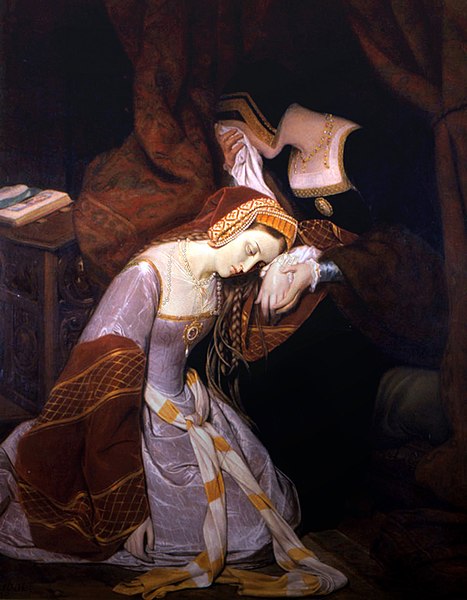May 17th stands out as a day marked by pivotal events that have shaped social, political, and cultural landscapes around the world.
This article delves into a chronological exploration of 20 key historical events that occurred on May 17th, offering insights into the impact and legacy of each occurrence.
From the early political intrigues of Tudor England to the modern strides in LGBTQ+ rights, we trace the evolution of society through the lens of this significant date.
May 17th – On this Day in History
1521 – Edward Stafford, 3rd Duke of Buckingham, is executed for treason
Edward Stafford, 3rd Duke of Buckingham, was an English nobleman and a distant cousin of King Henry VIII. His execution was a result of the king’s suspicion and paranoia about potential threats to his throne.
Also Read: May 16 Events in History
Stafford was accused of treason, partly based on allegations that he had listened to prophecies predicting the king’s early death and his own ascension to the throne. Despite the questionable evidence, he was convicted and executed, highlighting the dangers of being too close to power in Tudor England.
1536 – George Boleyn, Viscount Rochford and four other men are executed for treason, on accusations of adultery with Queen Anne Boleyn
George Boleyn, Viscount Rochford, was the brother of Queen Anne Boleyn. He, along with four other men, was arrested and accused of having adulterous relationships with his sister, Queen Anne, who was also accused of incest, adultery, and high treason.
The charges were likely fabricated by Anne’s political enemies, including Thomas Cromwell, to facilitate her removal and replace her with a queen who could produce a male heir. All five men were found guilty and executed, and Anne was executed shortly thereafter.

1590 – Anne of Denmark is crowned Queen of Scotland
Anne of Denmark was crowned Queen of Scotland following her marriage to King James VI of Scotland, who later became James I of England. Her coronation was held at Holyrood Abbey and was significant because it marked the union of Anne with James, strengthening the ties between Denmark and Scotland.
Also Read: May 18th – On this Day in History
Anne’s role as queen consort spanned both Scotland and England, and she was known for her patronage of the arts and involvement in cultural and political affairs of the Stuart court.
1642 – Paul de Chomedey, Sieur de Maisonneuve (1612–1676) founds the Ville Marie de Montréal
Paul de Chomedey, Sieur de Maisonneuve, founded Ville Marie, which is now known as Montréal, on May 17, 1642. The settlement was initially intended to be a mission colony dedicated to the Virgin Mary and to convert the local Indigenous populations to Christianity.
This settlement later grew to become one of the largest cities in North America, central to the development of Canada both culturally and economically, reflecting the broader colonial dynamics of the time.
1673 – Louis Jolliet and Jacques Marquette begin exploring the Mississippi River
French explorer Louis Jolliet and Jesuit priest Jacques Marquette embarked on an expedition to map the Mississippi River, one of the first European-led explorations of this major waterway.
They traveled from the Great Lakes down through the heart of the North American continent, reaching the river’s confluence with the Arkansas River.
Their journey helped to open up the interior of North America to further exploration and eventual settlement by Europeans, playing a crucial role in the colonial contest for North America.
1792 – The New York Stock Exchange is formed
The New York Stock Exchange (NYSE) was established when 24 stockbrokers signed the Buttonwood Agreement under a buttonwood tree on Wall Street in New York City.
This agreement set the groundwork for the trading of securities, and the NYSE would grow to become the world’s largest stock exchange by market capitalization.
The formation of the NYSE marked the beginning of formalized stock trading in America, significantly influencing the development of the U.S. economy.
1809 – Napoleon I orders the annexation of the Papal States to the French Empire
In 1809, Napoleon I, then Emperor of the French, ordered the annexation of the Papal States to the French Empire, a bold move that escalated his conflict with the Catholic Church and Pope Pius VII.
This annexation led to the Pope’s arrest and his subsequent imprisonment, which lasted until 1814. Napoleon’s actions against the Papal States were part of his larger strategy to consolidate power in Europe and suppress any institutions or authorities that could challenge his rule.

1814 – Norway’s Constitution is signed, providing the foundation for its independence
On May 17, 1814, Norway’s Constitution was signed at Eidsvoll, declaring the country as an independent kingdom in an attempt to avoid a forced union with Sweden after the Napoleonic Wars.
This constitution is one of the oldest in the world that remains in continuous force and was significantly influenced by the American and French revolutions. Norway’s Constitution Day is celebrated on this date, marking a pivotal moment in its national history.
1849 – A large fire nearly destroys St. Louis, Missouri
A massive fire almost destroyed St. Louis, Missouri, on May 17, 1849. The fire started on a steamboat and quickly spread to the city, consuming buildings, ships, and the waterfront area.
The destruction was extensive, leading to significant rebuilding efforts that transformed St. Louis. This event also spurred changes in fire safety regulations and the development of professional firefighting brigades in the city.
1865 – The International Telegraph Union (later the International Telecommunication Union) is established
The International Telegraph Union, now known as the International Telecommunication Union (ITU), was founded on May 17, 1865. It was established to standardize and regulate international radio and telecommunications.
The ITU was one of the first international organizations and played a crucial role in managing global communication technologies. Its creation marked a significant step towards the modernization and globalization of communications, reflecting the growing importance of connectivity in the industrial age.
1875 – The first Kentucky Derby is held at Churchill Downs in Louisville, Kentucky
The first Kentucky Derby was held at Churchill Downs in Louisville, Kentucky. This event was founded by Colonel Meriwether Lewis Clark Jr., who was inspired by horse races he witnessed in Europe. The inaugural race was won by a horse named Aristides.
The Kentucky Derby has since become the longest continuously held annual sporting event in the United States. It is also the first leg of the American Triple Crown, followed by the Preakness Stakes and the Belmont Stakes, making it a prestigious event in thoroughbred horse racing.
1933 – Vidkun Quisling and Johan Bernhard Hjort form Nasjonal Samling — the national-socialist party of Norway
On this day, Vidkun Quisling, a former minister of defense, and Johan Bernhard Hjort, a lawyer, founded the Nasjonal Samling (National Unity) party in Norway. This political party was nationalist and fascist in orientation, drawing inspiration from other fascist movements of the time, notably the Nazis in Germany.
Nasjonal Samling became infamous during World War II when Quisling collaborated with the German occupiers, leading to his name becoming synonymous with traitor. The party was disbanded after the war ended.
1940 – WWII: Germany occupies Brussels, Belgium.
During World War II, German forces occupied Brussels on May 17, 1940, as part of their broader offensive through the Low Countries (Belgium, the Netherlands, and Luxembourg) and France. This rapid and strategic invasion led to the eventual fall of France and the establishment of German occupation in much of Western Europe.
Brussels remained under German occupation until its liberation in September 1944. This occupation had significant political and social consequences for Belgium during and after the war.

1954 – The U.S. Supreme Court hands down a unanimous decision in Brown v. Board of Education of Topeka, Kansas, declaring racial segregation in public schools unconstitutional
On May 17, 1954, the U.S. Supreme Court delivered its decision in Brown v. Board of Education of Topeka, Kansas, unanimously ruling that racial segregation in public schools was unconstitutional.
This landmark decision overturned the 1896 Plessy v. Ferguson ruling that had established the “separate but equal” doctrine, which sanctioned segregation.
The Brown v. Board decision was a major victory for the civil rights movement and set the stage for further legal and social advancements toward racial equality in the United States.
1970 – Thor Heyerdahl sets sail from Morocco on the papyrus boat Ra II to sail the Atlantic Ocean
Norwegian explorer Thor Heyerdahl set sail from Morocco on the Ra II, a boat made of papyrus, on May 17, 1970. This was his second attempt to prove that ancient people could have made long sea voyages, connecting civilizations across oceans.
The Ra II successfully sailed from Morocco to Barbados, demonstrating the seaworthiness of ancient craft designs and contributing to our understanding of prehistoric maritime travel. Heyerdahl’s expeditions were crucial in opening up new theories about migration and cultural exchange across distant geographies.
1973 – The Watergate hearings begin in the United States Senate
The Watergate hearings began on May 17, 1973, when the United States Senate convened to investigate the Watergate scandal.
This series of televised hearings captured national attention, uncovering the details of the break-in at the Democratic National Committee headquarters at the Watergate office complex and subsequent cover-up by members of the Nixon administration.
These hearings were crucial in exposing the extent of the illegal activities and led to increased public pressure for transparency and accountability in government, culminating in the resignation of President Richard Nixon in 1974.
1983 – Lebanon, Israel, and the United States sign an agreement on Israeli withdrawal from Lebanon
On May 17, 1983, Lebanon, Israel, and the United States signed an agreement outlining the withdrawal of Israeli forces from Lebanon. This agreement was supposed to end the Israeli occupation that began in 1982 during the Lebanon War, aimed at curtailing Palestinian militant operations.
However, the agreement was never ratified by the Lebanese Parliament due to Syrian opposition and the lack of support from Lebanese factions. The agreement eventually collapsed, and the Israeli forces remained in parts of Lebanon until 2000.
1987 – The USS Stark is struck by two Iraqi Exocet missiles during the Iran-Iraq War, killing 37 sailors
The USS Stark, a Perry-class frigate of the United States Navy, was struck by two Iraqi Exocet missiles during the Iran-Iraq War on May 17, 1987. The attack occurred in the Persian Gulf, mistakenly carried out by an Iraqi aircraft.
This incident resulted in the deaths of 37 American sailors and caused significant damage to the ship. Despite this, the Stark was not sunk and was able to continue operating after repairs. The incident highlighted the dangers faced by neutral countries’ military forces in conflict zones and led to changes in U.S. naval operational procedures.
1990 – The General Assembly of the World Health Organization (WHO) eliminates homosexuality from the list of psychiatric diseases
On May 17, 1990, the World Health Organization (WHO) made a landmark decision to remove homosexuality from its list of psychiatric diseases. This significant change came after extensive advocacy from gay rights organizations and marked a crucial moment in the global movement for LGBTQ+ rights.
The decision helped to reduce stigma and discrimination against LGBTQ+ individuals and has been commemorated annually since 2004 as the International Day Against Homophobia, Transphobia, and Biphobia.
2004 – Massachusetts becomes the first U.S. state to legalize same-sex marriage
Massachusetts became the first U.S. state to legalize same-sex marriage on May 17, 2004. This historic event followed a Massachusetts Supreme Judicial Court ruling in 2003, which found that the state constitution guarantees the right to marry regardless of the gender of the partners.
This breakthrough was a significant victory for LGBTQ+ rights in the United States and prompted several other states to reconsider and eventually change their marriage laws. The move paved the way for nationwide legalization of same-sex marriage in the U.S. in 2015.
